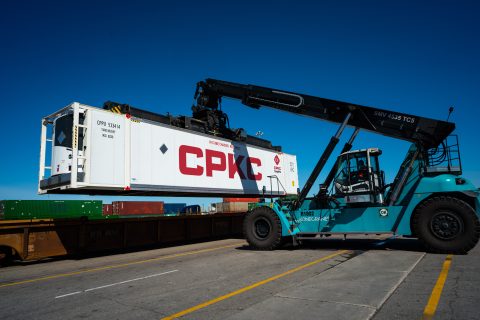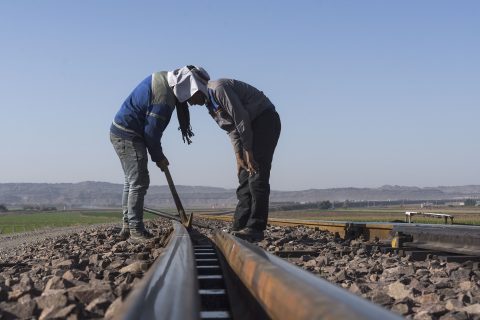Iran pushes to ink official contract with India to develop Chabahar port

The Iranian minister of roads and urban development, Rostam Qasemi, does not aim to miss any more time and wants to make India’s involvement in the port of Chabahar’s development official. After Indias’s investment in the port with six new cranes targeting the growing traffic on the International North-South Transport Corridor (INSTC), Iran is ready to sign a long-term contract with India to develop the Persian Gulf port.
Qasemi made his intention apparent in a meeting with the Indian minister of ports, shipping and waterways, Sarbananda Sonowal. He highlighted his hopes that “the relations between the two countries regarding investment in Chabahar port will materialise.”
Sonowal, on the other hand, mentioned that “if Chabahar reaches its full potential, then it can not only become the gateway for Indian trade with Europe, Russia and CIS countries but also turn into one of the most important ports in the world in the near future.” However, he did not provide any clear hints on India’s official plans regarding the port.
Rewinding a bit, India’s involvement in the port of Chabahar started taking place in late 2018, when the India Ports Global Chabahar Free Zone, a subsidiary of India Ports Global Limited, took over the port’s operations. Since then, developments have been slow, but they have picked up during the past year, especially after Russia started looking for transport alternatives through Central Asia.
The latest news concerning Chabahar came in late August when India opened up about its intentions to invest in the Iranian port of Chabahar with six new cranes and other equipment worth 25 million US dollars. This move recognises the port’s importance in transhipping rail volumes from Russia and Central Asia on their way to India and other Southern and Eastern Asian countries.
Same policy, different partners
Iran’s struggle to find external investors to build its outdated or non-existent infrastructure has been apparent for years. However, the tide seems to be turning lately, with Russia and India looking eager to finance major projects in the country.
In this sense, Iran follows the same policy with both partners. In simple words, Iran puts the hot potato in India’s and Russia’s hands, saying that infrastructure like the Chabahar port or the Rasht-Astara railway line is critical for all countries and the development of the INSTC.
As a result, since India and Russia will both benefit, they should also initiate investments that will pay off in the long term. After all, Russia, Iran and India seem to become stronger partners at all levels lately, especially since the two first found themselves stranded from the markets under the sanctions regime.
Also read:
-
Iran, a corridor and a missing link: will Russia unlock them?
-
India invests in Chabahar port to boost International North-South Corridor
-
A new stop on the Russia-Iran corridor: port of Turkmenbashi
You just read one of our premium articles free of charge
Want full access? Take advantage of our exclusive offer




